My name is Hudson Berkhouse and I am a senior Wildlife and Fisheries Sciences major at Texas A&M University. One of the reasons I was originally drawn to this major was that it combines a thorough scientific education in many wildlife-related scientific fields with hands-on training and experience. Accordingly, students seeking a degree in Wildlife and Fisheries Sciences must, at some point in their undergraduate years, fulfill an internship that is in some way related to their studies. For my internship, I was able to work as a field technician and on several other tasks for Dr. Light, a professor of Mammalogy, at Texas A&M during the summer of 2015.

The field-based project I worked on was a biodiversity research project in South Texas based at several ranches owned by the East Foundation (http://www.eastfoundation.net/). During my internship, I traveled with other field technicians to the ranches to collect data concerning the presence and abundance of small mammals. Because most of the land in Texas is privately owned and therefore difficult to access for research purposes, this project is able to provide important data towards a better understanding of the distributions of wildlife spread across Northern Mexico and Southern Texas.
As I mentioned earlier, my team was concerned primarily with data collection on small mammals, or “smammals” as we affectionately referred to them. Towards this end, our daily routine consisted of setting Sherman traps in the early evening when it had begun cooling off, retrieving those traps early the next morning before it got too hot, and collecting both data and specimens from the animals we had trapped.
Although every aspect of this process was interesting to me, I specifically want to describe the data and specimen collection process. When we went out into the field to retrieve our traps in the mornings, we made sure to bring all equipment necessary for gathering data with us. Collecting the data as soon as possible was important because it reduced stress on the animals, ensured that whatever specimens we chose to retain would be in good shape, and protected the accuracy of our data by reducing opportunities for human error.

Some of transects where we trapped were intended to yield data only, whereas others were set with the goal of specimen retention. Animals found in traps that fell into the former category were weighed, sexed, measured, and freed. During this process we took note of any obvious deformities or ectoparasites that could be found on the animal. The most important data from these transects involved which species could be found at different locations throughout the ranch. The goal of the latter type of transect (where specimens were retained) was to collect a few specimens of each species, destined for preparation and preservation. Accordingly, those animals belonging to species that had already been collected were freed, whereas members of the different target species were culled and preserved. Throughout all of these steps it was impressed upon me that minimizing the stress each animal must undergo, whether they are to be freed or culled, is of the utmost importance.
Part of what made this internship such a valuable experience was the insight into field work it gave me, as well as a much better understanding of what it is to do scientific research in my field of study. I also greatly enjoyed getting to know my coworkers in an arena outside the classroom. As a result of my job that summer, I know and respect my fellow students more, and have a much better understanding of the professional aspects of my major.

